1. Brief History
There have been many agreements and alliances between Parisian Universities and Institutes in the past. Throughout the years, exact groupings have changed. Sorbonne Paris Cité itself is a recently established consortium of institutions.
In 2008, Sciences Po and INALCO were both included in the Paris Universitas, an association that had been created in 2005. Paris Descartes University and Paris Diderot University, however, were part of the Paris Centre Universités. A rearrangement plan, titled “Plan Campus” or “Opération Campus” and announced by the Minister of Higher Education and Research, aimed to drive the targeted university establishments to a level of international excellence. Funds were allocated and after an act was signed, institutions were regrouped in the form of an EPCS or Public Establishment of Scientific Cooperation.
In 2010, the PRES, or Pôle de recherche et d’enseignement supérieur was officially established, gaining the new title “Sorbonne Paris Cité”. It brought together Sorbonne Nouvelle University, Paris Descartes University, Paris Diderot University, Paris 13 University, Sciences Po, National Institute of Oriental Languages and Civilizations (INALCO), EHESP School of Public Health and Institute of Physics of the Globe.
In 2012, Sorbonne Paris Cité was certified “ Initiative d’Excellence” on the basis of a project shared by all members of the consortium. Going forward towards 2016, the member Universities and Institutes plan to cooperate, generating a new and unified university. Throughout the summer of 2013, a new bill regarding Higher Education and Research was voted by the French Assembly. Consequently to this new law, the PRES Sorbonne Paris Cité has transformed itself into a University, taking the status of EPSCP, Public Establishment of Scientific, Cultural and Professional Cooperation. By grouping institutions, Sorbonne Paris Cité is able to take advantage of economies of scale as well as gain higher international recognition.The Sorbonne Paris Cité project associates five national research institutions : INSERM, CNRS, INRIA, INED, IRD.
Prominent current or former staff from the member schools include:
- Jean-Luc Bennahmias, European Parliament
- Jean Dausset, Nobel Prize in Medicine in 1980
- George Fitzgerald Smoot, Nobel Prize in Physics in 2006
- Luc Moullet, Prix Jean Vigo winner at the Cannes Festival
- Maria Isaura Pereira de Queiróz, Admiral Álavaro Alberto Award winner
- Josette Rey-Debove, Recipient of the National Order of Quebec and Chevalier (Knight) of the National Order of Merit of France
- Axel Khan, Silver Medal from the French National Centre for Scientific Research and Laureate of the National Academy of Medicine, WHS President 2009
- Hervé Morin, Former French Minister of Defence
- Alain Carpentier, Laureate of the “Fondation pour la rechercheé médicale” award and the “Prix Albert Lasker pour la rechercheé médicale”
- Henri Lôo, Knight in the Legion of Honour and Officer in the National Order of Merit
- André Brahic, Discovered the Neptune rings
- Jean Bernard, First president of the “Comité Consulatatif National d’Éthique”
- Ngô Bảo Châu, Recipient of the Clay Research Award and the Fields Medal
- Claude Goasguen, Recipient of the Legion of Honour


2. Key Facts
Established:
2010 (PRES)
2014 (COMUE)
Type:
COMUE (Communauté d’Universités et d’Etablissements)
Structure:
Sorbonne Paris Cité unites four universities and four institutes of research and higher education:
- Sorbonne Nouvelle University This University has degrees in languages, literature, arts and media, humanities and social studies, at all levels of study.
- Paris Descartes University This University of health and human sciences offers subjects like psychology, physical education, human sciences, law, economics, management studies, mathematics, computer science, technology, biomedical sciences, medicine, pharmacy and dental surgery. This University is the second largest currently in Paris.
- Paris Diderot University This is a highly multi-disciplinary University, offering the subjects of art, literature, languages, humanities and social sciences, economics, science and technology, medicine and odontology. It is a leading research institution.
- Paris 13 University This University is divided into the following five campuses, all situated outside Paris: Villetaneuse, Bobiny, Saint-Denis, Plaine Saint-Denis and Argenteuil. The University includes three institutes of technology.
- Institute of Physics of the Globe (IPGP) This institute is affiliated with the National Center for Scientific Research (CNRS).
- National Institute of Oriental Languages and Civilizations (INALCO) Instruction is offered for 93 languages and civilizations, geography, history, political science, international relations and oriental trade.
- Sciences Po (Institute of Political Science) The University, offering courses in law, economics, history, political science and sociology, aims to develop students with a global perspective.
- EHESP School of Public Health This School is made up of six teaching and research departments, a health and environment research facility, and six research centers that span multiple disciplines. Educative programs focus on the health sector.
The unified University has a group, the CCOU, which regroups 48 representatives from the member institutions. These members meet regularly with the goal of organizing a vast debate, at the level of the Sorbonne Paris Cité, regarding the unified university project.
Sorbonne Paris University is highly multi-disciplinary and has an abundance of interdisciplinary programs.
Staff:
8,500 professor-researchers and researchers, and 6,000 technical and administrative staff.
Students:
120,000 students, 6,700 doctoral students. More than 20,000 of these are international students coming from all over the world, thanks to international cooperation programs.
Budget
800 Mio (2012-2016)
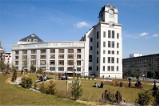

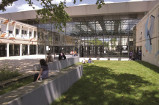
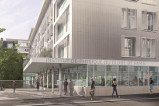
3. Research
Focus / Key Aspects:
Sorbonne Paris Cité focuses on collaborative projects, encouraging joint research between establishments as well as work that crosses disciplines. There are more than thirty interdisciplinary doctoral schools at Sorbonne Paris Cité, meaning that approximately 8500 researchers and professors are combining a number of different disciplines in their work.
In the spring of 2013, Sorbonne Paris Cité launched an appeal for interdisciplinary research programs. After evaluating all submitted proposals, the committee selected projects revolving around 9 main themes. The programs will receive initial pre-financing. Themes can be found online
Sorbonne Nouvelle University
Five doctoral schools are divided into 30 research units and focus primarily on language, literature, culture and art.
Paris Descartes University
Research is conducted in 85 affiliated laboratories by 4,000 researchers. Projects are in the following departments: biology, medicine and health, mathematics, human sciences and humanities, chemistry, information and communication technology, and societal sciences.
Paris Diderot University
This University has 92 research teams, having links with CNRS, INSERM and CEA. This breaks down to 2,000 researchers, 1,400 teaching and research staff and 550 administrative and technical staff working in research. Research spans medicine, science (mathematics, computer science, physics, chemistry, biology and earth sciences) and arts, humanities & the social sciences (literature, arts, languages & foreign civilizations, linguistics, history & philosophy of science, clinical psychology, sociology, geography, history).
Paris 13 University
Research is conducted in the areas of human and social sciences, law, economy, management, mathematics, computer science, physics, engineering, ethology, health and medicine.
4. Partnerships and Programs
Partnerships and Affiliations::
Sorbonne Paris Cité has connections with several other Universities globally.
- The Centre Virchow-Villermé of Public Health Paris-Berlin: This collaboration encourages research cooperation initiatives between the two countries. This year, the two institutions have called for project proposals, especially those which compare the French and German public health systems in various respects. The coordinating establishment is Paris Descartes University.
- National University of Singapore: The Alliance between these two institutions encourages research projects and mobilization of students at the master-doctoral level. This relationship is coordinated through Sciences Po. An appeal for projects in 2013 led to 12 financed projects. Examples of joint research projects include the following: Progressive Cities in Asia and Europe, Negotiating Trade Agreement between the European Union and Singapore, and and Ageing, environment and energy, in France and Singapore.
- Buenos Aires: There is an exchange of students, as well as research cooperation between CONICET (Conseil National de Recherches Scientifique et Technique, Argentine), CIN (Conseil National Interuniversitaire), Buenos Aires University and the Universit of Sorbonne Paris Cité. The coordinating establishment is Sorbonne Nouvelle – IHEAL.
- University of Sao Paulo: The two Universities have an exchange program for students and a collaborative research program. The coordinating establishment is Paris Diderot University.
Student Programs:
Sorbonne Paris Cité has launched a contest to students to come up with initiatives, related to intervention, environment, academic, culture, etc. The important part is that all projects must have students from at least two different institutions working alongside one another.
In February, Sorbonne Paris Cité renewed its agreement of civil service. This will allow for recruitment of students to work towards the established missions. These include: promoting university courses to students in secondary establishments, welcoming and assisting students coming from abroad, taking preventative action in the realm of health, reaching the public with scientific information, promoting culture in the institution and assisting disabled students.
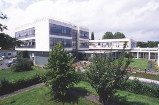
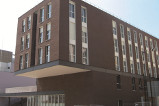
5. Trivia
Motto:
Sorbonne Nouvelle University:
Hic et ubique terrarum
“Here and anywhere on Earth”
Paris 13 University:
Hic et ubique terrarium
“Here and anywhere on earth”
Sciences Po:
Excellence, Innovation, Diversité
“Excellence, Innovation, Diversity”
Paris Descartes University:
Des Sciences de l’Homme et de la Santé
“Of Humanities and Health”
Miscellaneous:
In March 2014, Sorbonne Paris Cité launched an appeal for MOOC (Massive Open Online Courses). Of the projects received, nineteen were selected to be financed in 2014-2015. The list of courses to be offered is available online
